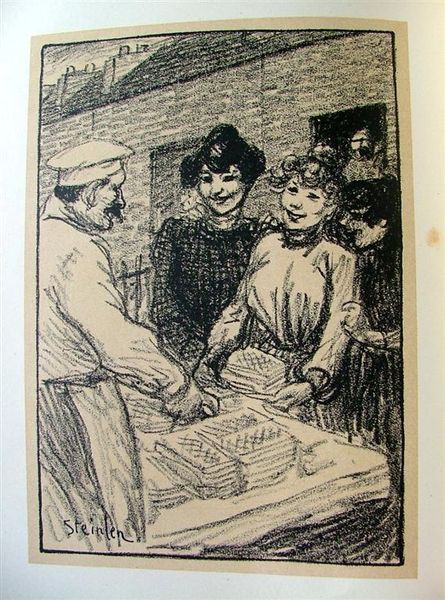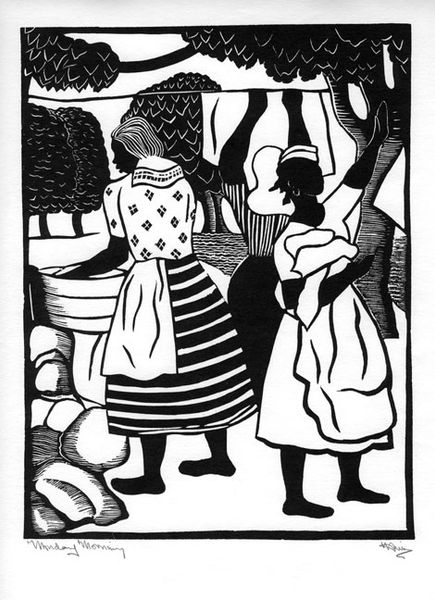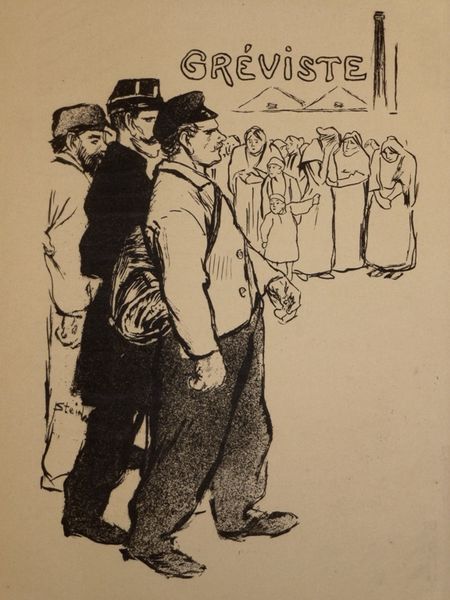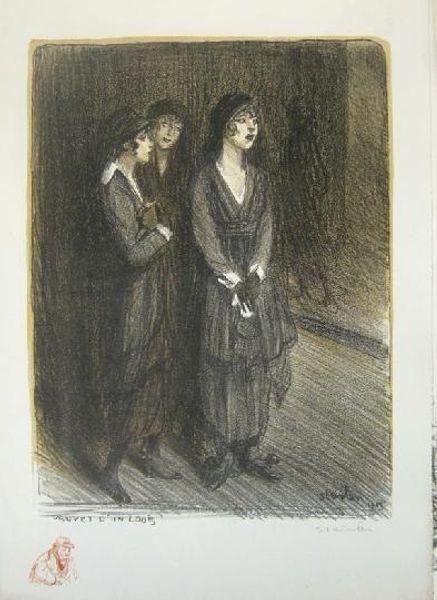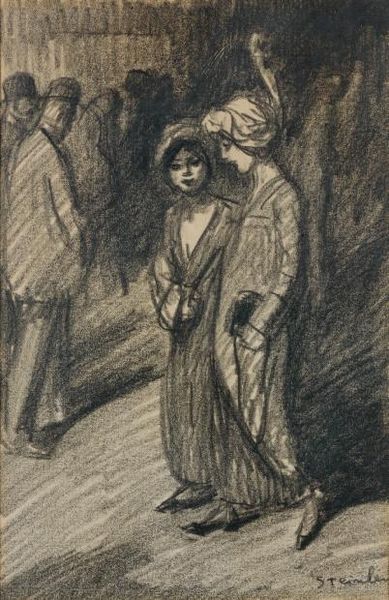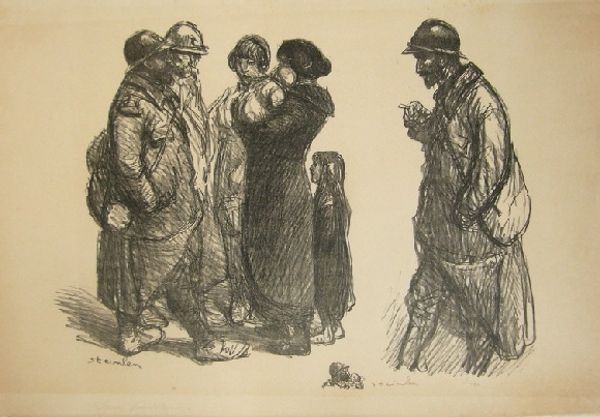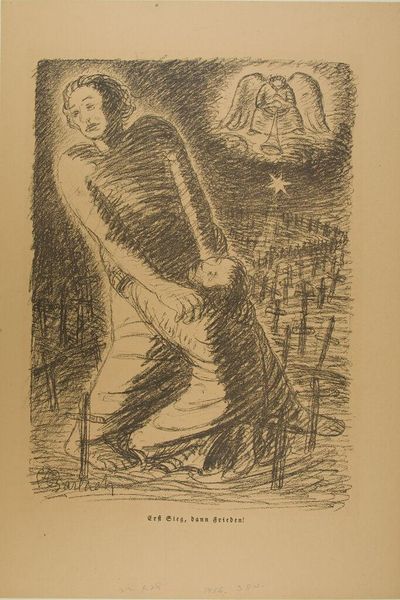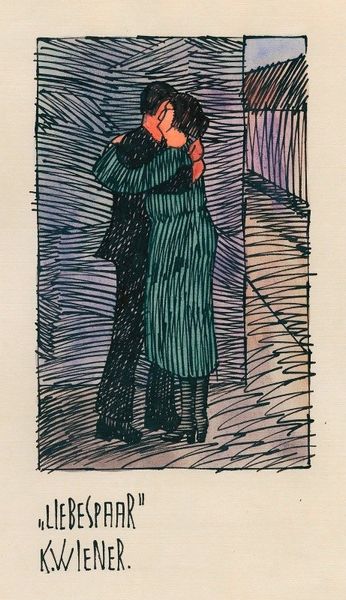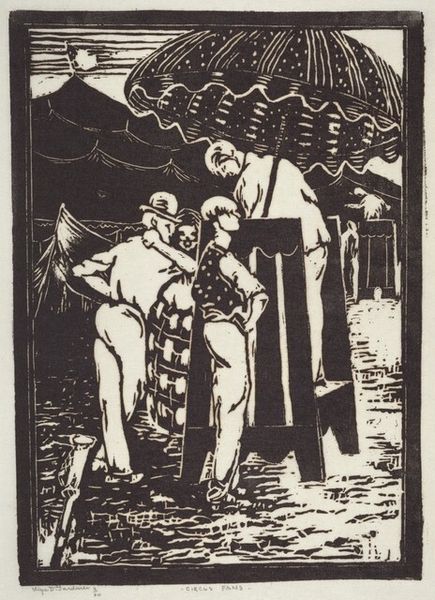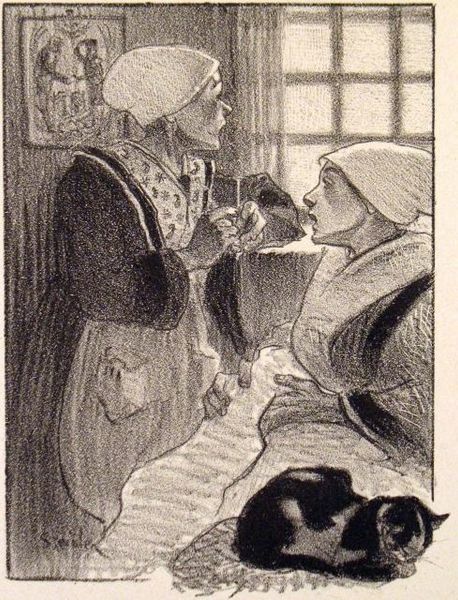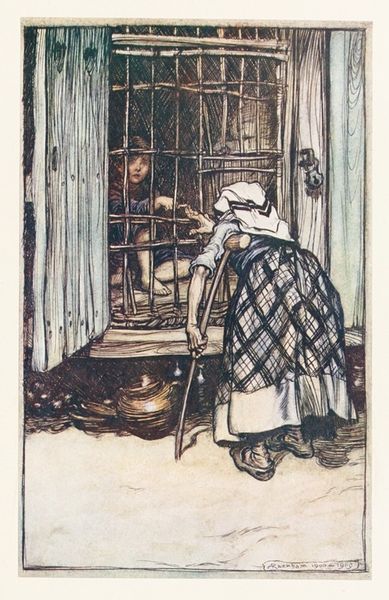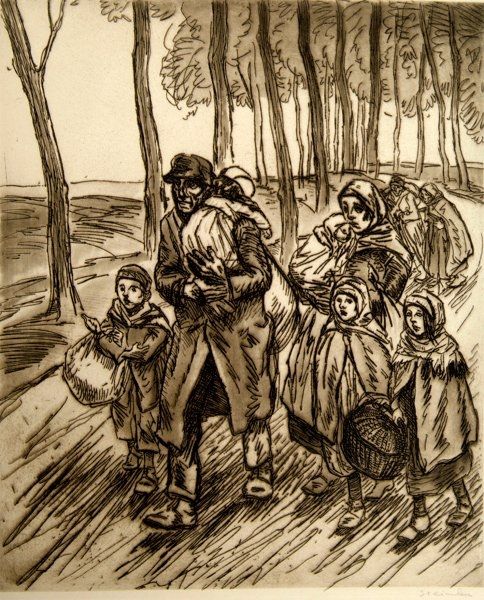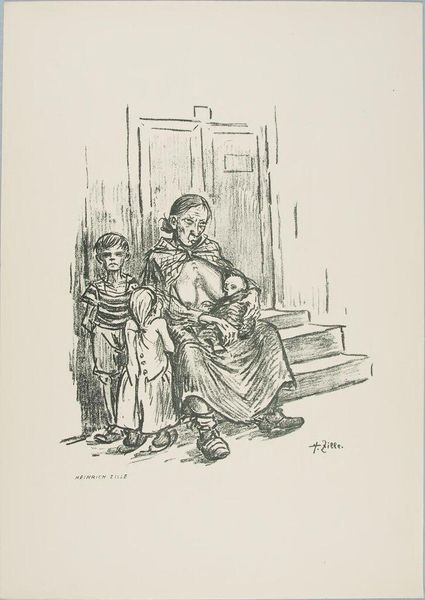
drawing, paper, ink, pastel
#
portrait
#
drawing
#
narrative-art
#
landscape
#
figuration
#
paper
#
ink
#
symbolism
#
genre-painting
#
pastel
Copyright: Public domain
Curator: Looking at Théophile Alexandre Steinlen’s "Idylle," created in 1907 using ink, pastel, and drawing on paper, I’m immediately struck by the raw, almost haunting quality of the scene. What's your first impression? Editor: There's a weight here, a visual austerity. The monochromatic palette contributes, certainly, but the body language speaks of sorrow. There's no "idyll" in that girl's eyes. Curator: Steinlen was deeply involved in social commentary. We see so many genre paintings which sentimentalize the hard rural life, but the piece seems like a commentary on labor exploitation, wouldn’t you agree? The weary adults in the background barely registering as individuals? It points to real-world struggles often glossed over in idyllic portrayals. Editor: I'd concur. Those figures blurred into the landscape almost seem to carry the weight of collective struggle and generational suffering. They evoke the iconography of peasant suffering present in other movements as well. Curator: There's such incredible tension between the piece's title, "Idylle," and what is actually represented. I am stuck on how Steinlen presents a stark contradiction between romantic idealism and the realities faced by many at the time. Editor: It's precisely in this dissonance that the piece speaks loudest. "Idylles," throughout history, serve specific purposes - reinforcing power structures, celebrating nationhood, erasing inconvenient truths. It prompts us to deconstruct similar works, identifying their cultural role. Curator: Thinking about its relevance to contemporary theory, it’s a reminder of the importance of questioning idealized representations and giving voice to marginalized narratives. It highlights the power dynamics inherent in depictions of labor and rural life. Editor: I agree. Considering all that’s been explored, the symbols and narrative carry incredible power and speak volumes. The contrast with what one expects becomes central to its message. Curator: Precisely. Thank you, as always, for sharing these new dimensions. Editor: Indeed. Looking through a social lens has enriched the art.
Comments
No comments
Be the first to comment and join the conversation on the ultimate creative platform.
